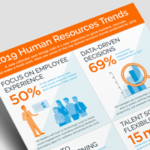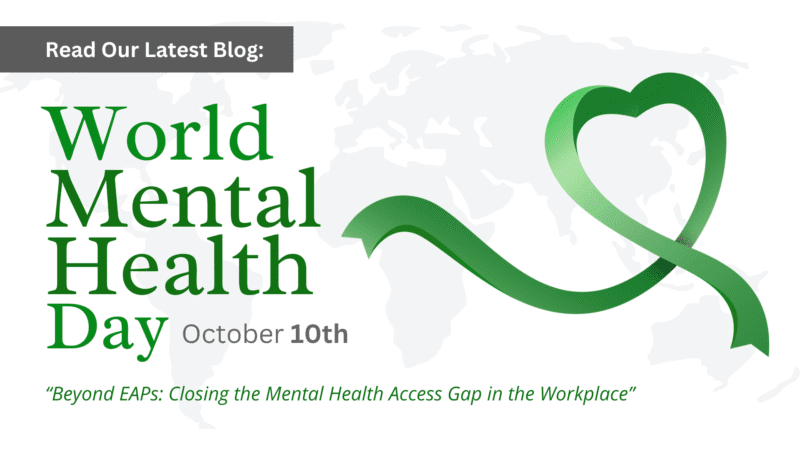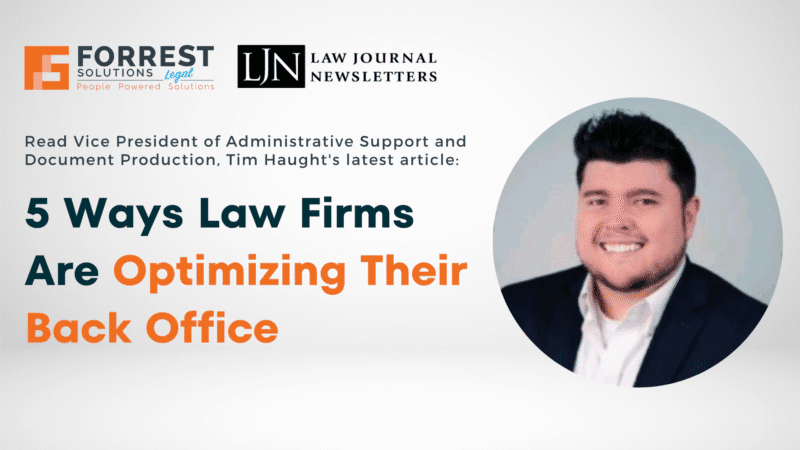
With Q2 2019 less than two weeks away, business leaders remain focused on attracting and retaining star talent in an effort to positively impact the balance of their year (and beyond!). In that spirit, we offer this reminder of the top Human Resources trends impacting recruitment and staffing needs in today’s market.
#1 Experience Matters
Employee Experience in 2019 will continue to encompass engagement, as well as culture and performance management.
With only 50% of job seekers crediting their most recent employer with advancing their career, HR leaders are encouraged to deepen their understanding of employees’ experiences by:
- Seeking technological ways to solicit real-time feedback
- Leveraging employee wellness apps and other well-being programs
- Experimenting with communication and productivity tools to continually foster an efficient and involved workforce.
When it comes to recruiting new employees, the hiring team should prioritize cultural alignment, and focus on bringing on people who share the same values as the hiring organization. Once the foundation of alignment is established, it will be a matter of the hiring organization maintaining what both Workforce and HR Trend Institute terms “employee intimacy.”
#2 Answers in the Analytics
Whether or not you have artificial intelligence or machine learning at your side, you’re still going to be expected to deliver data-backed insights. Speaking of data, a High-Impact People Analytics Study found 69% of companies integrated data measurement into their organizations in 2017 (compared to 10-15% of organizations in 2016).
Human Resources managers are increasingly being called upon to analyze and predict staffing needs, make the office environment more productive, and improve career development opportunities based on real-time data insights.
This trend will require resources devoted to developing databases, monitoring the tools, and performing data modeling to glean the real actionable information. At the same time, companies will need to take steps to ensure security and privacy of employees’ personally identifiable information as more data is pushed into sleek dashboards or other data visualizations.
#3 Microlearning Gains Traction
Rather than expending resources on classroom training for groups of employees on broad subjects, employee development is shifting to focus on micro-learning. More digestible small pieces of information will be available online, enabling the employee to learn where and when they need it.
Augmented and Virtual Reality solutions will also transform learning into a more enjoyable experience that can be better targeted to each individual’s skills, level of expertise, learning style, and particular needs.
In fact, learning in short bursts is said to increase information retention by 20%. This trend also corresponds to an increasing shift to hire based on attitude and behavior, rather than resumes alone, with the idea the people with the right talents and attributes can be trained in the required competencies.
#4 Talent Sourcing Flexibility
It’s estimated that approximately 50% of the U.S workforce will be temp, contract, or freelance workers by 2020. With an estimated 4 million people currently participating in the “gig economy,” on demand hiring (onsite outsourcing or short-term contracting) is both reducing costs and providing flexible access to a talent pool with the required skills.
“Atypical working” continues to gain ground. Platforms for collaboration are improving, and talent can be recruited from anywhere. Startups too are turning to onsite outsourcing to help meet the pressure to succeed with limited resources and tight budget constraints.
This skill-driven staffing trend doesn’t preclude a need to find people who will share the organization’s cultural values, but will see those doing the hiring under greater pressure to source highly valued employees with speed and agility.
Forrest Solutions will continue to follow and communicate these trends closely as the year unfolds, leveraging over 40 years of staffing and onsite outsourcing expertise to meet clients’ needs as they emerge.
See our infographic:
 |




